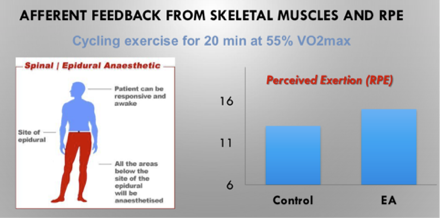Why Perception of Effort is a Key Component of Performance
/In a meeting with Olympiaparken, Lillehammer about athletic performance, I had an epiphany.
I realised that all of the athletes and coaches I’ve been speaking with, have asked me the same two questions:
1. What exactly is Brain Endurance Training?
2. How does Brain Endurance Training increase an athlete’s performance?
I will answer these two questions in a 5-part blog series, which will explain how Brain Endurance Training (BET), when used correctly, increases cognitive and physical performance for any athlete, in any sport.
Last week we dived into Why Mental Fatigue Destroys Atheltic Performance. This week we’re covering Perception Of Effort and why it’s a key component of athletic performance. Next week we’re looking at how exactly Brain Endurance Trainer can boost your performance.
First off, what exactly is Perception of Effort?
Perception of effort, otherwise known as perceived exertion, is defined as the “conscious sensation of how heavy and strenuous a physical task is.” (Marcora, 2010 in Staiano and Marcora, 2014) and is a key factor of mental fatigue and physical performance. It also provides information about the intensity of a physical or mental activity.
The most widely used and known way to measure the rate of perceived exertion (RPE) is using the Borg Scale of Perceived Exertion. The Borg Scale matches how hard you feel you are working with a numerical value (0-10 or 6-20) and a word anchor (“very, very light/easy” and “very, very hard/hard”).
It is crucial to only rate the total inner feeling of exertion, the overall sensations and feelings of physical stress, effort and fatigue. The athlete must disregard any other factors including physical pain and breathlessness.
For example, if I’m pushing hard on my pedals on Highway 19 on the Ironman World Championships course and the temperature is exceeding 90 Fahrenheit, I may be able to differentiate between thermal discomfort (pain) and how hard it feels to push on the pedals (RPE).
[Read more about the Performance Benefits of Brain Endurance Training For Ironman Triathletes here.]
Photo by Josh Miller
Another example is if an elite biathlete has been skiing hard and is transitioning from skiing to target shooting, they may be able to differentiate between breathlessness and how hard it feels to shoot the target accurately (RPE).
[Discover the Performance Benefits of Brain Endurance Training For Biathletes here.]
When used correctly, RPE is therefore the most effective measures of perception of effort. It indicates the amount of effort exerted during exercise, such as how hard it is to swim, ski or run at a certain pace, or how hard it is to cycle at a certain wattage.
What Generates Perception of Effort?
What actually generates perception of effort has been extensively debated. One of the most common scientific theories is that the peripheral signals from the body (e.g. muscles, heart and lungs) are the main factors in generating the sense of effort we feel in response to physical activity.
Walter Staiano, Sswitch’s Head of Research, Sport Scientist and Neuro-Performance consultant, says it’s clear that the incorrect use of the RPE scales and inclusion of other sensations (e.g. physical pain, heart rate and breathlessness) in the RPE has supported this theory.
However, in the last 20 years numerous scientific studies have challenged this theory and provided new insight. These studies show that RPE is generated independent of peripheral signals from the body. There’s now strong evidence supporting that RPE is centrally generated in the brain.
These studies used powerful analgesics (e.g. fentanyl) or nerves blockade drugs (e.g. curare) directly injected into the participant via epidural, which completely numbed any peripheral signal from the belt down.
Following the epidural, participants then performed an all-out physical exercise (cycling). Although researchers expected a boost in performance and a significant reduction in RPE, they did not find any of it. Sense of perceived exertion increased anyway and performance was unchanged, as shown in the image.
Image from article by Sswitch
Furthermore, studies using heart rate beta blockades and anaesthetics to block signals from the lungs, supported that RPE may not be generated by peripheral signals coming from the cardiorespiratory system.
This theory also explains why deliberately inducing mental fatigue using cognitive tasks alters perception of effort and produces a reduction in any subsequent physical performance (with physiological parameters unchanged).
Perception of effort is one of the key components of performance. Any changes in perception of effort as a result of cognitive and/or physical manipulations affects your performance.
It is therefore really important to clearly understand all of the possible explanations and mechanisms of perception of effort, both generated from peripheral signals and centrally in the brain.
Mental Fatigue Through Perception Of Effort Limits Performance
As explained and suggested in the scientific studies, mental fatigue negatively impacts athletic performance. This is because an increased sense of fatigue, increases the perception of effort in completing a specific physical and/or mental action, which impairs endurance performance, motor skills performance and decision-making performance.
fMRI and EEG studies further prove that cognitive load increases perceived exertion which leads to impaired performance. Muscle pain or muscle fatigue is not significantly affected, and other physiological parameters are unaffected.
Neurophysiology of Cognitive Load
The present study shows how an increase in cognitive load after 90 min of demanding and continuous cognitive tasks (STROOP Colour test and PVT) can produce a negative effect in vigilance, reaction time and perceived effort.
More importantly, EEG measures helped to unveil the neurophysiology behind such changes in performance due to fatigue, and it can help to quantify cognitive load in an objective manner.
Moreover, neurophysiological assessments of load and fatigue will help us better understand how the brain works and copes with an increasing load. It may also help us to measure possible brain changes in responses to different types of cognitive training (e.g. BET).
Neural Correlates of Perception of Effort: A Brain Imaging Study
During the preliminary test the eccentric fatiguing protocol induced a significant 17% reduction in maximal torque in the fatigued leg (MVC fatigued pre: 201±17 Nm and MVC fatigued post: 165±9 Nm [p<0.001]), but not in the non-fatigued leg. Therefore, during the subsequent weight lifting task, the fatigued leg could exert on average 17% less force than the non-fatigued leg. Participants did not report any significant pain in their fatigued leg. This result was confirmed by the fact that PPT (Pressure Pain Threshold test) and muscle soreness scale was not significantly different between the legs and across all the three different muscles assessed, at any time during the test. We did not find a significant main effect of muscle fatigue for this variable.
Blood lactate concentration was also not affected by the eccentric fatiguing protocol (lactate pre, 0.8 ± 0.2 mmol·l−1 and lactate post, 1.0 ± 0.3mmol·l−1 [p = 0.498]). As expected, the type of eccentric protocol with rest in between sessions did not produce any metabolic accumulation at the end of the fatiguing protocol. During the weight lifting task, rating of perceived effort increased significantly during the scanning session across the runs and increased even higher in the fatigued leg compared to the non-fatigue leg (p =0.01).
These findings confirm and strengthen previous results on the correlation between RPE and central motor command and it may suggest the role of the brain centres related to the effort - based decision-making mechanisms such as ACC in the development of the perception of effort.
In Summary
Perception of effort is the feeling of how hard it feels to complete a physical activity, independent of other sensations such as pain and breathlessness. It’s therefore one of the key factors of performance, as an increase in your perception of effort, as a result of cognitive and/or physical manipulations before/during a race/competition, negatively impacts your performance.
As studies have shown, perception of effort is generated in the brain, independent of peripheral signals from the body. This means that with deliberate and targeted cognitive tasks that induce the right amount of mental fatigue, you can alter your perception of effort, so you can sustain and endure higher levels of performance.
So you’ll be experiencing an increased perception of effort and mental fatigue at a SLOWER rate than your competitors, enabling you to outthink, outlast and outperform them.







